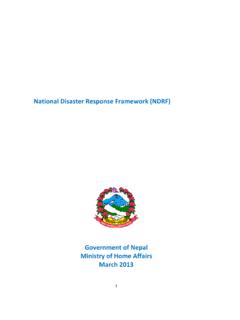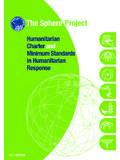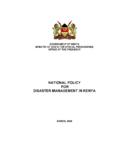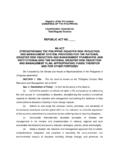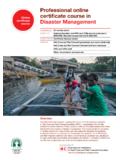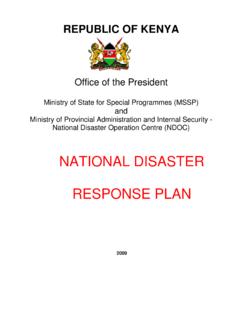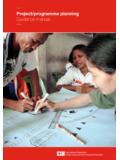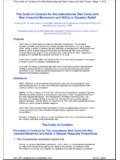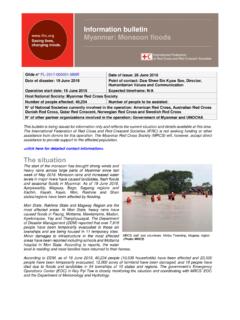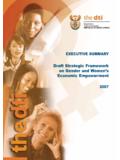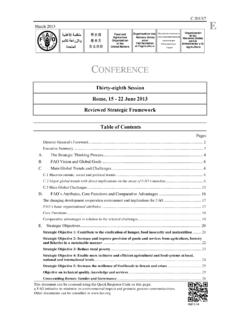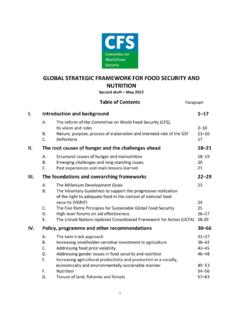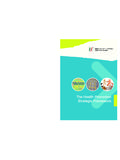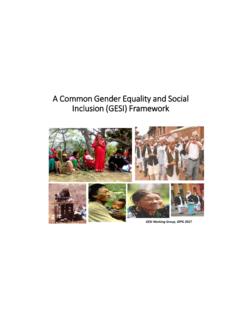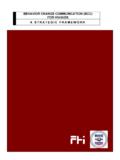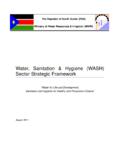Transcription of Maternal, newborn and child health framework - …
1 Lives, changing , newborn and child health framework International Federation of Red Cross and Red Crescent Societies, Geneva, 2013 Copies of all or part of this study may be made for noncommercial use, providing the source is acknowledged. The IFRC would appreciate re-ceiving details of its use. Requests for commercial reproduction should be directed to the IFRC at opinions and recommendations expressed in this study do not nec-essarily represent the official policy of the IFRC or of individual National Red Cross or Red Crescent Societies. The designations and maps used do not imply the expression of any opinion on the part of the IFRC or National Societies concerning the legal status of a territory or of its au-thorities.
2 All photos used in this study are copyright of the IFRC unless otherwise indicated. Cover photo: Majda Box 303CH-1211 Geneva 19 SwitzerlandTelephone: +41 22 730 4222 Telefax: +41 22 733 0395E-mail: site: , newborn and child health framework1232600 01/2013 EInternational Federation of Red Cross and Red Crescent SocietiesMaternal, newborn and child health framework1 Maternal, newborn and child health frameworkStrategy 2020 voices the collective determination of the IFRC to move forward in tackling the major challenges that confront humanity in the next decade. Informed by the needs and vulnerabilities of the diverse communities with whom we work, as well as the basic rights and freedoms to which all are entitled, this strategy seeks to benefit all who look to Red Cross Red Crescent to help to build a more humane, dignified and peaceful the next ten years, the collective focus of the IFRC will be on achieving the following strategic aims:1.
3 Save lives, protect livelihoods and strengthen recovery from disasters and crises 2. Enable healthy and safe living 3. Promote social inclusion and a culture of non-violence and peace2 International Federation of Red Cross and Red Crescent SocietiesMaternal, newborn and child health frameworkTable of contentsChapter 1. Purpose 5 Chapter 2. Background MNCH today: challenges and opportunities MNCH programming by IFRC MNCH and continuum of care Gaps in the MNCH continuum across the pregnancy-to-childhood and home-to-hospital dimensions Undernutrition in the context of the MNCH continuum of care 14 Chapter 3. MNCH in the Red Cross Red Crescent context Goals and objectives Cross-cutting principles and approaches 16 Chapter 4.
4 Strategy and planning Comprehensive assessment Selecting target communities and populations 18 Chapter 5. Design and interventions Levels of the delivery of interventions across a home-to-hospital continuum Appropriate mix of interventions 20 Chapter 6. Programme implementation 23 Chapter 7. MNCH in emergency 25 Chapter 8. Measuring success 28 International Federation of Red Cross and Red Crescent SocietiesMaternal, newborn and child health framework3 Chapter 9. Innovation and expansion Innovative use of mobile health and related information and communication technologies Innovative strategies for improving equitable access to diagnosis and treatment Innovative community strategies 30 References 31 Annex 1.
5 List of indicators for maternal, newborn and child health 35 Annex 2. Evidence for impact and cost-effectiveness of selected MNCH interventions 39 Annex 3. Estimated effects of selected MNCH interventions 41 Annex 4. Evidence for care provided by TBAs 434 International Federation of Red Cross and Red Crescent SocietiesChapter 1 Purpose5 This framework provides guidance and direction to National Societies, their programme managers and all other parties involved in the planning, design and implementation of programmes and interventions in maternal/reproductive, newborn and child health (MNCH, also referred to as RMNCH).The International Federation of the Red Cross and Red Crescent Societies (IFRC) is committed to the health and well-being of women and children and to the achievement of the Millennium Development Goals (MDG) 3, 4 and 51.
6 In addi-tion, the IFRC is committed to shaping the post-MDG MNCH MNCH framework (the framework ) builds on the understanding that prog-ress towards these goals requires reducing inequities in health and gender, and addressing their social determinants and human MNCH continuum of care is the operational context for health program-ming to ensure that there is continuity of care for women and children. To im-prove the overall health of women and children, continuity of care is necessary throughout the lifecycle as well as between places of caregiving. The framework promotes a developmental approach to relief whereby emergency response is used as a platform for sustainable scale-up of the essential MNCH interventions addressing longer-term vulnerabilities and risks.
7 Realizing the intrinsic link be-tween health and nutrition in the context of the global burden of maternal and child undernutrition, this framework considers essential nutrition interven-tions an integral part of activities across the MNCH continuum of framework presents strategic objectives, cross-cutting principles and a structured approach to guide the efforts of the National Societies in MNCH and to ensure that they: adhere to the Movement s principles and values and build on its strengths and strategic advantages are aligned with Strategy 2020 and with objectives of the Global Strategy for Women s and Children s health are consistent with the WHOs concept of MNCH, the current evidence-base and best practices in community-based health programming can be integrated with the national MNCH plans of individual development of the framework took place between September 2010 and February 2012 and draws on discussions and conclusions of the MNCH working group, consultations with zones and National Societies.
8 And the resolution 62 of the 31st International Conference of the Red Cross and Red MDG 3 promote gender equality and empower women; MDG 4 reduce child mortality; and MDG 5 improve maternal Resolution 6: health inequities: reducing burden on women and Federation of Red Cross and Red Crescent SocietiesMaternal, newborn and child health frameworkThe framework is a living document that will be updated periodically. It is de-veloped with the understanding that both the unique geo-cultural and political context of each country operation, as well as the evidence-base related to the effectiveness of MNCH interventions are constantly evolving and hence require a certain degree of responsiveness.
9 Above all, this framework provides guid-ance it is not meant to be a set of prescriptive Federation of Red Cross and Red Crescent SocietiesChapter 2 MNCH today: challenges and opportunitiesWomen s and children s health has been at the forefront of the IFRC s efforts worldwide. This commitment is consistent with the Movement s fundamental principles and its mission to build capacities of people and communities to find sustainable solutions for their most pressing needs and and livelihood security of hazard-prone communities where National Societies work are, to a great extent, determined by the health of the most vul-nerable groups: mothers, newborns and than 1,000 women die each day 358,000 a year during pregnancy and child birth mainly due to poor access to effective interventions: skilled care during childbirth is available only to 60 per cent of women.
10 And even fewer less than 40 per cent receive a postnatal visit (WHO, 2010). Meanwhile, the number of unintended pregnancies is 76 million a year, and unsafe abortions reach 22 million accounting for 13 per cent of all maternal deaths. In most de-veloping countries, access to family planning remains very limited despite its potential to avert deaths: satisfying the unmet need for contraceptives would reduce unintended pregnancies by two-thirds, which, in turn, would save more than million maternal and newborn lives and prevent 505,000 children from losing their mothers (UNFPA, 2010).Among children younger than five years, the estimated annual number of deaths is million, including three million within the first month of life; an-other million babies are born dead.
